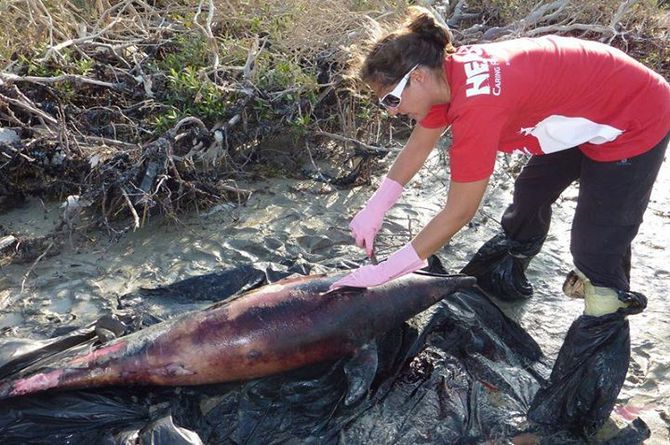Juvenile bottlenose dolphin stranded in El Gouna
Of those, six happened just this year. This does not necessarily mean that dolphins have been stranding more lately, but rather we think that the number of reports of these events has increased, a sign that the community is getting more and more involved and prepared to act on these occasions. We sincerely compliment you! The dolphin, a male bottlenose (very likely an Indo-Pacific bottlenose dolphin –Tursiops aduncus) was found at the beginning of October in El Gouna nearby the Abu Tig Marina. The animal was in moderate decomposition indicating that it had been dead just a few days. It was about 150 cm in length and its teeth were not completely erupted in the lower jaw, suggesting an age of about six months or less. The stomach content inspection supported the age assessment: only milk was found, indicating also that the dolphin was being fed by the mother shortly before its death. No obvious human impacts were found on the animal. An internal examination revealed that the cause of death was natural and possibly related to lungs disease. Documentation collected is being examined by experts for a more precise and definitive diagnosis. We would like to thank the National Parks who informed and supported HEPCA by arranging the logistics and helping the Cetacean Research Unit and a member of the DolphinWatch project during the necropsy on site. If you happen to find a stranded animal, please do not touch it and prevent others from doing so as pathogens may be transmitted and you may involuntarily alter elements which would otherwise be helpful during later examination. Contact HEPCA at 065-344 5035 as soon as possible and, if you have a camera with you, take a picture, this could turn out very valuable in arranging intervention and for reconstruction of the event.



